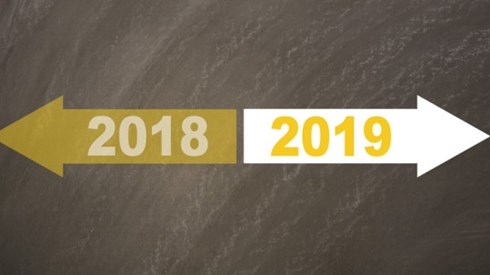2018: A Look Back at Captives and a Vision of Success

Michael Maglaras | January 17, 2019

When I look back at 2018, I see, with complete clarity, the reason why captives are still being formed and maintained in an environment very deeply affected by a continuing soft commercial market condition.
The liability business is the core of the captive movement. Whether it's general liability, professional liability, or cyber liability, or any other form of liability that stems from a tort action, the more-than-decade-long soft casualty market, which—when you factor in the jaded thinking of the commercial marketplace—should have put captives into a death spiral, in fact has done the opposite.
Why have captives flourished? Why do they continue to be formed at a growth curve that is still robust all over the world in all the major domiciles? Why is Vermont's secretary of state, Jim Condos, exploring captives and the electronic ledger process? Why did Connecticut's former Governor Dan Malloy decide during his tenure to use a captive to fix a concrete natural disaster involving $1.5 billion in potential claim payouts? Why are captives still relevant?
Captives Innovate
For me and for many of my colleagues, the answer is easy: captives innovate.
First, when you get in the habit of investigating, reserving, adjusting, and, most importantly, learning from your own claims, you never go back. Captives are, above all else, claims-paying vehicles. When we strip all the shiny stuff that we all talk about at industry meetings out of the captive process, the most boring part of the captive process has proven to be the most successful. It's how insureds learn to manage their own losses.
Right now, on any given day of the week, in any major domicile, a captive business plan is sitting before a regulator, which is more innovative, creative, and forward-thinking than almost anything happening in the commercial marketplace.
This is happening because captives are good at accelerating delivery of ideas and techniques. Yes, I'm familiar with the arguments in the commercial marketplace about how captives lack requisite underwriting skills, about how captives can't possibly have access to the level of claim expertise the commercial market has, and how captives are just someday going to fall off the cliff into an abyss of insolvency.
Hasn't happened yet. Not going to happen anytime soon.
The capital and surplus ratios to long-term liabilities within the captive industry speak for themselves. In the midst of mega-health system consolidations and the inexorable move in health care from tax-exempt to taxable business, the so-called smart money was betting against captives.
How come Vermont closed 2018 with a surge of healthcare liability captives if this is the case?
Domiciles
There is another reason 2018 was a bright year in our industry.
It was the year that one fact was proven beyond a shadow of a doubt: the perceived differences among captive domiciles simply don't exist anymore. When you move service provider preferences about domiciles off the discussion table, one fact remains: a good captive business plan with good service provider support and adequate capital is a good business plan, regardless of domicile. The idea that certain classes of business naturally "belong" in one domicile over another has been nonsense for a very long time, but it was in 2018 that the true reality of this nonsense set in. We will eventually move in the captive industry to a virtual domicile concept. Everybody knows this is the case.
When I started in this business more than 35 years ago, I worked for a major reinsurer. My boss gave a speech at a major offshore captive conference where he opined, "I don’t know why you asked me to speak. My company will never support the captive insurance industry." In less than a year, I was working elsewhere; in a little over a year, he was fired. Three years later, that reinsurer was supporting one of my captives.
The Death of "Alternative Risk"
The phrase "alternative risk" died in 2018. The data speaks volumes about how in some classes of business it's the commercial market that has become the alternative, not the captive business.
Captives are alive and well and flourishing and creating new ways each day for insureds to protect balance sheets and smooth out earnings. The captive movement is stronger than ever, because it is more innovative than ever.
I look forward to 2019 and what I know will be the best and strongest year yet in the captive industry.
Michael Maglaras | January 17, 2019




